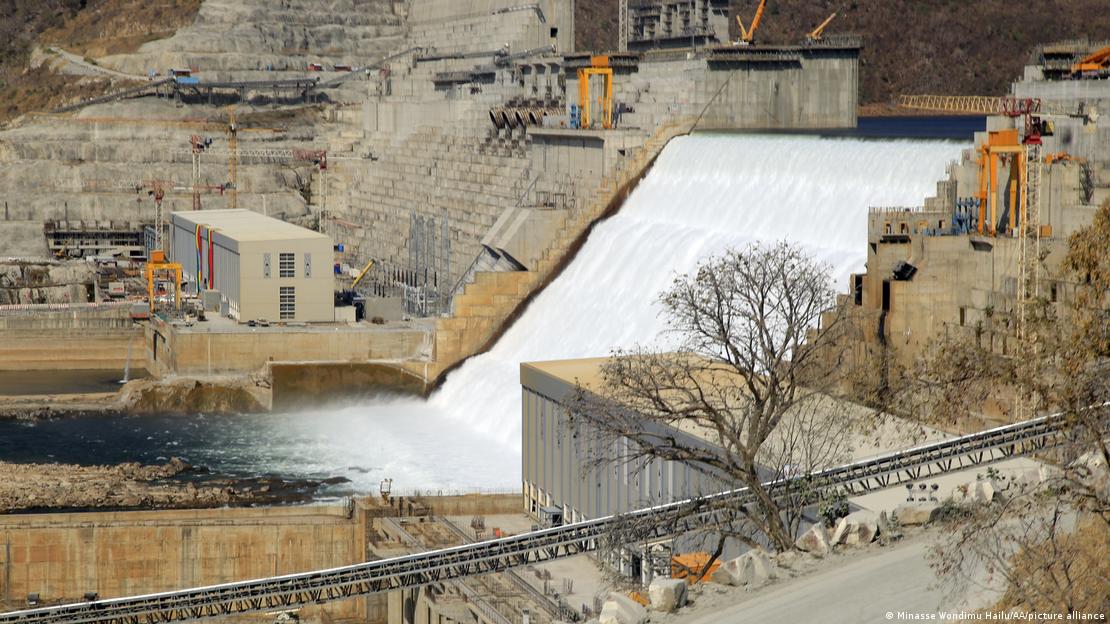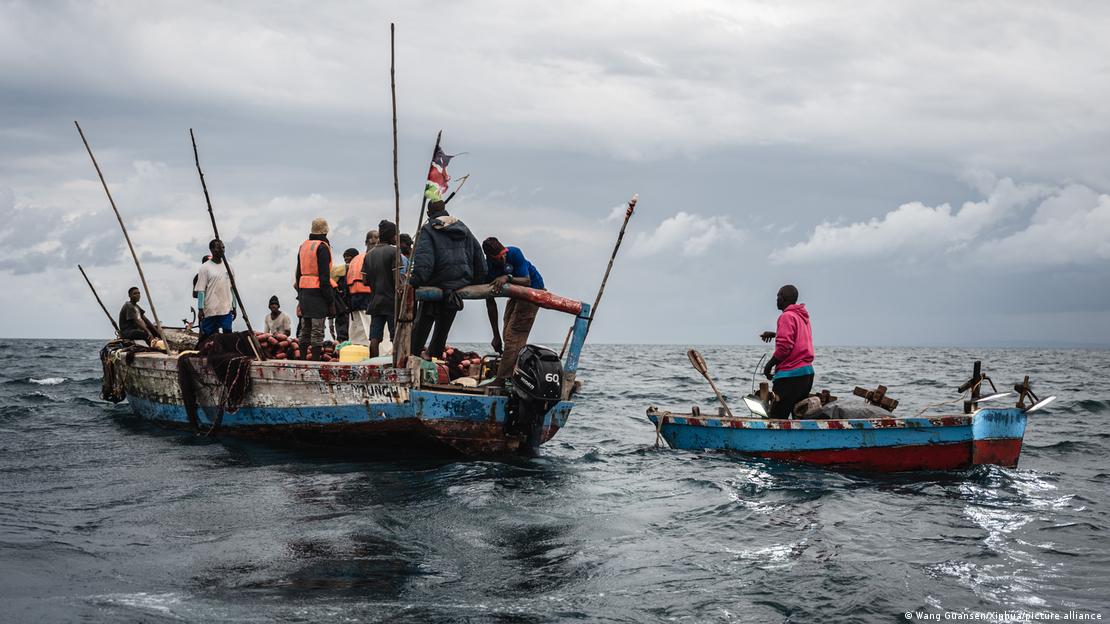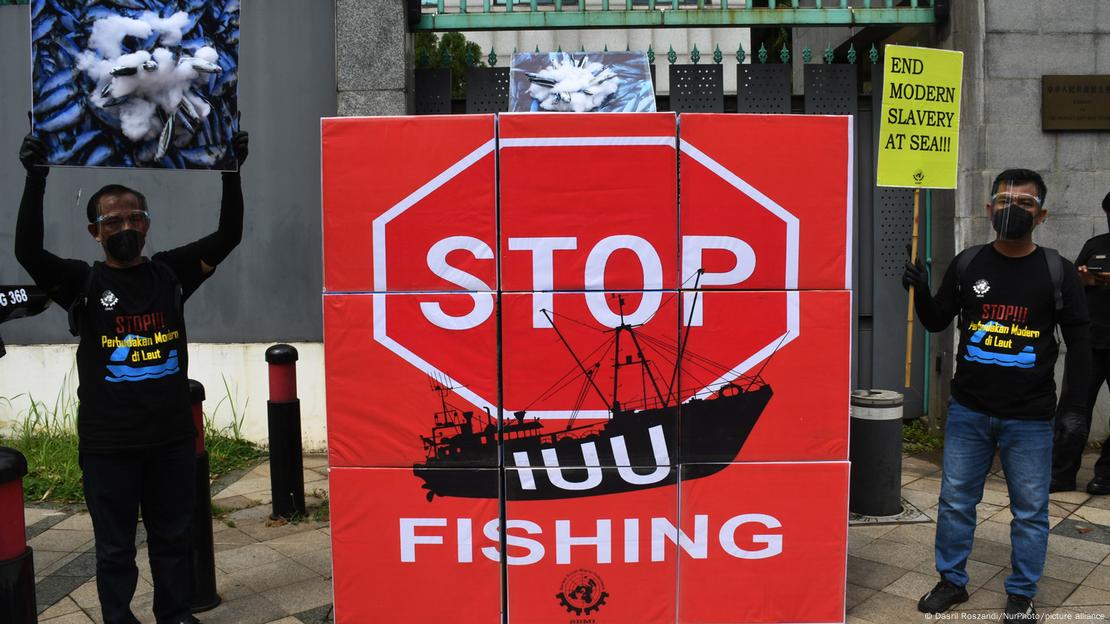Cathrin Schaer | Azhar al-Rubaie
May 4, 2024
It was always double-edged, but in Iraq, social media was often a comparatively safe place where the local queer community could meet. Recent amendments to Iraqi law are changing all that.
It was always double-edged, but in Iraq, social media was often a comparatively safe place where the local queer community could meet. Recent amendments to Iraqi law are changing all that.
Burning the rainbow flag: Conservative politicians in Iraq often describe LGBTQ+ rights as being "imported" from the decadent West
Image: Ameer Al-Mohammedawi/dpa/picture alliance
Social media has always been one of the only places where members of the LGBTQ+ community in Iraq could meet and be more open about their sexual identity.
"Before Instagram, members of the community created fake Facebook accounts and joined secret groups to get to know one another," Khalid, a 22-year-old student in the central Iraqi province of Babylon, told DW; he could not give his full name because doing so would expose him to danger. "Then with Instagram's 'close friends' story feature [launched in 2018], it became even easier for people to connect, and even to find love."
The country's conservative culture means that most queer locals have always hidden their sexuality. Surveys of attitudes toward homosexuality in Middle Eastern countries indicate that usually less than 10% of local populations "approve" of homosexuality.
"So social media has been the main platform of expression of any kind here, especially for those who do not have their own spaces," explained Ayaz Shalal Kado, executive director of the Iraqi human rights organization IraQueer. "That includes vulnerable groups, such as the LGBTQ+ community, disabled people and others. Social media was a way for these people to express themselves, connect and create communities," he told DW.
Social media has always been one of the only places where members of the LGBTQ+ community in Iraq could meet and be more open about their sexual identity.
"Before Instagram, members of the community created fake Facebook accounts and joined secret groups to get to know one another," Khalid, a 22-year-old student in the central Iraqi province of Babylon, told DW; he could not give his full name because doing so would expose him to danger. "Then with Instagram's 'close friends' story feature [launched in 2018], it became even easier for people to connect, and even to find love."
The country's conservative culture means that most queer locals have always hidden their sexuality. Surveys of attitudes toward homosexuality in Middle Eastern countries indicate that usually less than 10% of local populations "approve" of homosexuality.
"So social media has been the main platform of expression of any kind here, especially for those who do not have their own spaces," explained Ayaz Shalal Kado, executive director of the Iraqi human rights organization IraQueer. "That includes vulnerable groups, such as the LGBTQ+ community, disabled people and others. Social media was a way for these people to express themselves, connect and create communities," he told DW.

Many Middle Eastern countries have a queer scene but unlike in Lebanon
(pictured) it mostly remains hidden
Hassan Ammar/AP/picture alliance
While social media and digital platforms have offered an opportunity, they have also posed a danger, Human Rights Watch said earlier this year as it launched the campaign Secure Our Socials. Working with local rights groups, Human Rights Watch reported how digital activity was being used by authoritarian states against individuals suspected of being queer.
While social media and digital platforms have offered an opportunity, they have also posed a danger, Human Rights Watch said earlier this year as it launched the campaign Secure Our Socials. Working with local rights groups, Human Rights Watch reported how digital activity was being used by authoritarian states against individuals suspected of being queer.
Dangers of digital life
This danger is now likely to increase for the LGBTQ+ community in Iraq.
Despite generally negative attitudes toward same-sex relationships, Iraq — unlike most other countries in the Middle East — never had a law explicitly criminalizing them. Instead, Iraqi officials used more vague anti-obscenity laws to punish and harass members of the LGBTQ+ community.
But in late April, the Iraqi government amended a pre-existing law on prostitution. The new amendments ban any sort of homosexuality or transsexuality, punishing these with up to 15 years in prison. Anybody seen to "promote" homosexuality could be fined up to 15 million Iraqi dinars ($11,220, €10,5050) or sentenced to jail for up to seven years.
This comes after the Iraqi Communications and Media Commission, which regulates local media, issued rules in August 2023 mandating that media in Iraq may no longer use the term "homosexuality" and should instead replace it with the phrase "sexual deviance." Media may also not talk about "gender."
According to the local media outlet Rudaw, Iraqi lawmakers insisted they needed the amendments "to preserve the entity of Iraqi society from moral degeneration," as the amendment text read.
"The truth is, this new law is not new at all," Babylon-based student Khalid complained. "We've always lived in fear and hiding." It's just that now there's even more thing to worry about, he told DW.
International criticism
The amendments were widely criticized by international rights organizations and Iraq's foreign allies.
The United Nations Assistance Mission for Iraq said the law contradicts a number of human rights treaties ratified by Iraq. The US State Department argued the new rules could be used to "further hamper free speech and personal expression and inhibit the operations of [non-governmental organizations] across Iraq."
Iraqi NGOs are still working out exactly how to respond. One Iraqi rights organization, Gala for LGBTQ, posted advice on its Instagram page that included telling users to make their accounts private, unfollowing openly queer accounts and deleting digital material that could be seen as LGBTQ+-friendly.
"If you are in Iraq, it is better not to talk or publish about the LGBTQ+ community and leave this to people who are outside Iraq," the organization suggested.
"There are many ways to fight back and that's what the community is working on currently," IraQueer's Kado told DW. "Safety and security are the highest priority. But we will not give up. That is not an option."
Kado does worry that the online presence of Iraq's LGBTQ+ community is about to be reduced or even disappear altogether, as locals realize the dangers of using social media. But, he adds, there are even larger ramifications around freedom of expression in Iraq.
This danger is now likely to increase for the LGBTQ+ community in Iraq.
Despite generally negative attitudes toward same-sex relationships, Iraq — unlike most other countries in the Middle East — never had a law explicitly criminalizing them. Instead, Iraqi officials used more vague anti-obscenity laws to punish and harass members of the LGBTQ+ community.
But in late April, the Iraqi government amended a pre-existing law on prostitution. The new amendments ban any sort of homosexuality or transsexuality, punishing these with up to 15 years in prison. Anybody seen to "promote" homosexuality could be fined up to 15 million Iraqi dinars ($11,220, €10,5050) or sentenced to jail for up to seven years.
This comes after the Iraqi Communications and Media Commission, which regulates local media, issued rules in August 2023 mandating that media in Iraq may no longer use the term "homosexuality" and should instead replace it with the phrase "sexual deviance." Media may also not talk about "gender."
According to the local media outlet Rudaw, Iraqi lawmakers insisted they needed the amendments "to preserve the entity of Iraqi society from moral degeneration," as the amendment text read.
"The truth is, this new law is not new at all," Babylon-based student Khalid complained. "We've always lived in fear and hiding." It's just that now there's even more thing to worry about, he told DW.
International criticism
The amendments were widely criticized by international rights organizations and Iraq's foreign allies.
The United Nations Assistance Mission for Iraq said the law contradicts a number of human rights treaties ratified by Iraq. The US State Department argued the new rules could be used to "further hamper free speech and personal expression and inhibit the operations of [non-governmental organizations] across Iraq."
Iraqi NGOs are still working out exactly how to respond. One Iraqi rights organization, Gala for LGBTQ, posted advice on its Instagram page that included telling users to make their accounts private, unfollowing openly queer accounts and deleting digital material that could be seen as LGBTQ+-friendly.
"If you are in Iraq, it is better not to talk or publish about the LGBTQ+ community and leave this to people who are outside Iraq," the organization suggested.
"There are many ways to fight back and that's what the community is working on currently," IraQueer's Kado told DW. "Safety and security are the highest priority. But we will not give up. That is not an option."
Kado does worry that the online presence of Iraq's LGBTQ+ community is about to be reduced or even disappear altogether, as locals realize the dangers of using social media. But, he adds, there are even larger ramifications around freedom of expression in Iraq.
Wide-ranging impact on rights groups
"Banning words like 'homosexual' or 'gender' is a huge step backwards — and not just for queer people," he argued. "It's intersectional. It doesn't just affect my organization, but also all feminist organizations, all those who work for women's rights, and those who focus on gender and bodily rights in general."
There have also been other cases of social media becoming dangerous in Iraq.
The same weekend Iraqi authorities passed the new LGBTQ+ rules, a popular Iraqi influencer, Ghufran Mahdi Sawadi, known online as Um Fahad, was murdered by an unknown assailant outside her home, most likely because of her online persona.
"Every young person has the right to entertainment and to share content on their Snapchat account," Sawadi's brother Amir, told DW. "This is their personal life."
Over the past year, two other Iraqis who were well known on social media — a transgender person known as Simsim and Noor Alsaffar, who posted videos of himself in women's clothing — were also murdered.
As Kado argues, all this should be seen as connected. "History shows us that when one group is targeted, then another vulnerable group is bound to be next," he concluded. "Once you allow perpetrators [of human rights abuses] to take a step without accountability, they will take more steps. At some point it will be too late to stop them."
Edited by: Cristina Burack

























